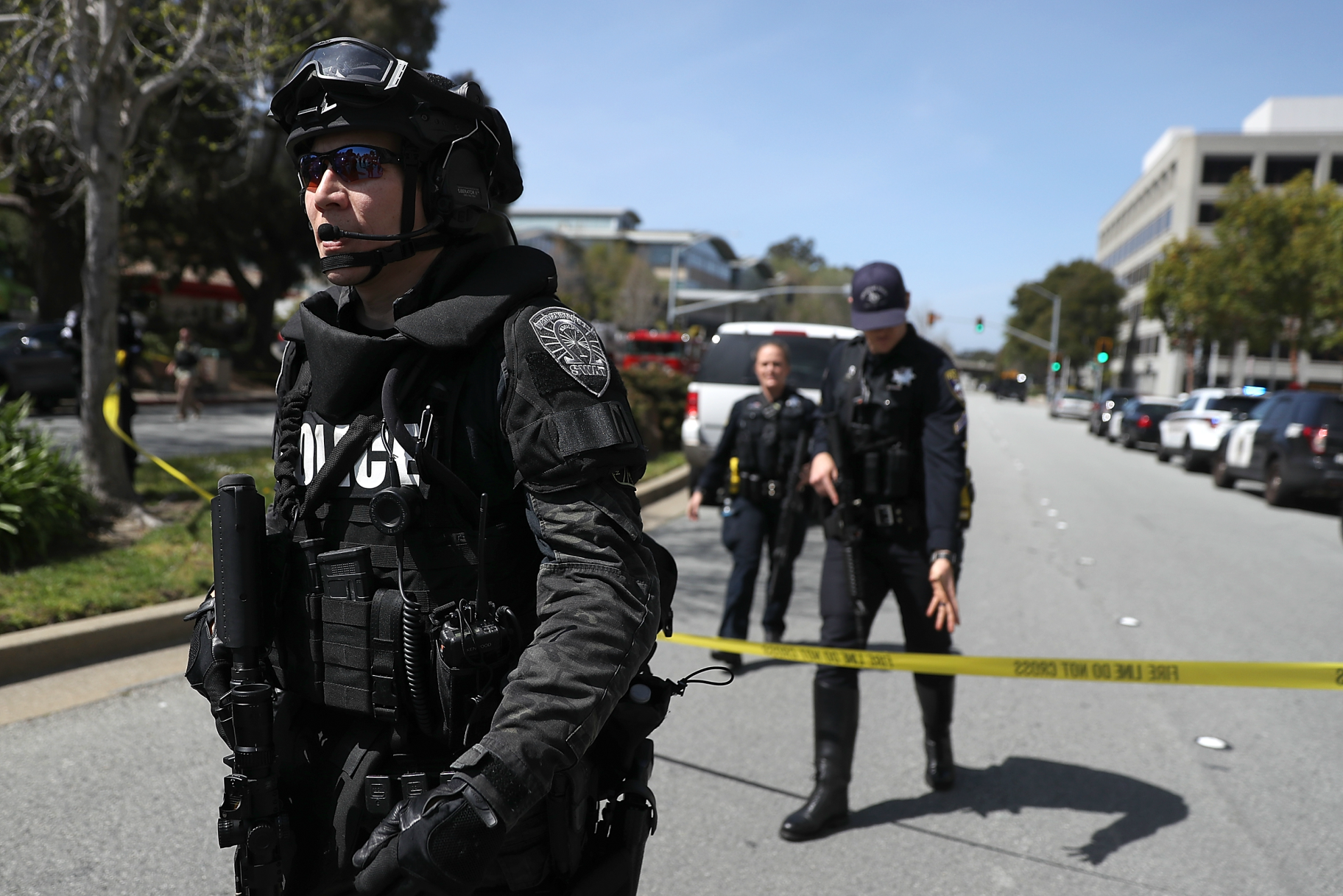Create a free profile to get unlimited access to exclusive videos, breaking news, sweepstakes, and more!
Why Are Mass Shooters Rarely Women?
Mass shootings are rarely committed by women, and experts are still trying to figure out why.

Nasim Najafi Aghdam, 39, walked into YouTube headquarters in San Bruno, California on April 3 and pulled out a 9mm Smith & Wesson handgun. She began firing in an outdoor dining area, shooting and injuring at least four people before killing herself. Unfortunately, the resulting headline was one Americans have become all too accustomed to — another mass shooting had taken place. One detail that came as a surprise to some, however, was that Nasim was a woman.
While women mass shooters aren’t entirely non-existent, they are rare. Men are more likely, in general, to commit violent crime — men are the perpetrators of 98% percent of mass shootings and 90% of murders in America, Newsweek reports. According to data collected and analyzed by Mother Jones, of the 62 cases of mass shootings — defined as a single attack in a public place in which four or more victims were killed — that occurred from 1982 to 2012, 44 of the killers were white males, while only one was a woman. Jennifer San Marco was an ex postal worker who, in 2006, returned to the Goleta, California postal center where she used to work and opened fire, killing six people before turning the gun on herself.
An FBI study of “active shooter incidents” arrived at similar conclusions when analyzing mass shootings from 2000 to 2013, with such events being defined as “an individual engaging in killing or attempting to kill people in a confined and populated area.” Of the 160 incidents, six of them involved female shooters like San Marco. Cathline Repunte, 36, killed one person on April 23, 2001, after she began shooting a handgun in the maintenance yard of Laidlaw Transit Services in San Jose, California. Latina Williams, 23, opened fire in a classroom at Louisiana Technical College in Baton Rouge, Louisiana on February 8, 2008, killing two before killing herself. Two years later, on February 4, 2010, 44-year-old professor Amy Bishop Anderson (covered on the Oxygen podcast Martinis & Murder) opened fire at a biology department meeting at the University of Alabama in Huntsville, Alabama, killing three people before surrendering to police.
The next month, on March 30, 2010, 41-year-old Arunya Rouch opened fire in the parking lot of her former place of employment, a Publix supermarket in Tarpon Springs, Florida. She killed one person before being apprehended by police. Later that year, on September 9, 2010, 43-year-old Yvonne Hiller killed two of her former co-workers after being fired from the Kraft Foods Factory in Philadelphia, Pennsylvania and returning to her former place of employment with a handgun.
Also noteworthy is the 2015 San Bernardino, California shooting that left 14 dead and 17 wounded after a married couple, 28-year old male Syed Rizwan Farook and 29-year-old Tashfeen Malik, opened fire during a holiday party at the Inland Regional Center, a facility for people with developmental disabilities. Malik stood out for her sadism, retired FBI profiler and author Mary Ellen O'Toole told Live Science. Firing into a room full of innocent people is “very sadistic,” O’Toole explained, “and sadistic violence like this is almost exclusively male.”
Despite the varying definitions of mass shootings, one constant seems to be that women are rarely the perpetrators.
“It's definitely very rare to see a female shooter,” Sherry Hamby, research professor of psychology at the University of the South in Sewanee, Tennessee told NBC News. “The more extreme the violence, the more likely the perpetrator is to be male.”

When seeking to explain why men make up the vast majority of mass shooters, some experts point to the different ways men and women have been socialized to handle distress.
“Men commit the overwhelming majority of mass shootings for basically the same reasons they commit most violent crimes,” Dewey G. Cornell, forensic clinical psychologist and director of the Virginia Youth Violence Project at the University of Virginia, wrote in an email to CNN. “Men tend to be more violent than women because of a complex interaction of evolutionary and psycho-social factors. Men tend to be more aggressive and less inhibited by empathy, and men in distress seem to be less willing to turn to others for help.”
For now, it seems that there is no definitive answer, with some experts theorizing that there just aren’t enough female mass shooters to conduct a conclusive study.
“We can't really answer that question of differences between male and female offenders because we don't have enough female offenders,” said Adam Lankford, criminal justice professor at the University of Alabama and author of the study “Public Mass Shooters and Firearms: A Cross-National Study of 171 Countries.”
Lankford continued, “The problem, or the good news, is we don't have enough female offenders for a statically significant sample.”
(Photo: Law enforcement stands watch outside of the YouTube headquarters on April 3, 2018 in San Bruno, California as police investigate an active shooter incident. By Justin Sullivan/Getty Images)














